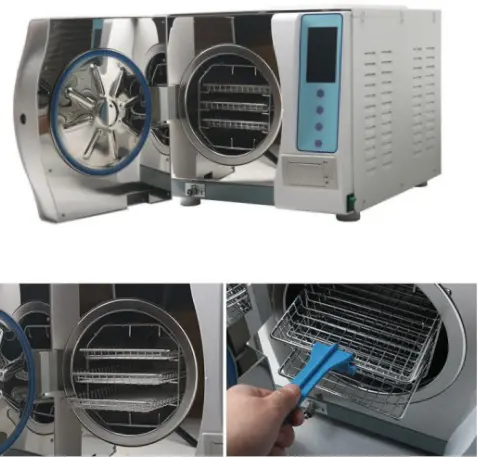Dental Autoclave Guide: What it is & How it works?
Expect the ordinary dental tools, a clinic still need a series of related dental tools to strictly follow the hygiene standard of dental practice. Whether the clinic/hospital is small or large, the sterilized autoclave is crucial in surgery operation and hygiene.
Understanding Dental Autoclaves for Clinics
In the world of dentistry, maintaining the highest standard of hygiene is paramount for patient safety and the prevention of cross-contamination. This is where the dental autoclave, an essential sterilization device, comes into play. This is where the dental autoclave, an important sterilization tool, comes into action. Dental autoclaves are built exclusively for dental clinics to ensure that all instruments fulfill the CDC's high sterilization criteria.
The Importance of Autoclaves in Dental Clinics
Autoclaves for dental use are not just another piece of equipment; they are a critical investment in patient health and practice reputation. An autoclave in a dental clinic serves a vital role in the sterilization process, ensuring that dental instruments such as drills, burs, and forceps are free of harmful microorganisms. This article seeks to provide a thorough explanation of dental autoclaves, how they work, and why they are so important in modern dentistry.
What is a Dental Autoclave?
A dental autoclave, or steam sterilizer, is a device used in dentistry to sterilize equipment and supplies. By using high-pressure saturated steam, the autoclave effectively eliminates all forms of microbial life, including bacteria, viruses, fungi, and spores. The technique not only cleans but also sanitizes the tools, making them suitable for use in a variety of dental operations.
How Does an Autoclave Work?
The autoclave can be divided into two types: vacuum autoclaves and gravity autoclaves. Today, I will talk about vacuum autoclaves, because it is versatile for our business and medical field. The working principle of vacuum autoclaves is the vacuum autoclave pump forces the ambient air out of the chamber, allowing steam to enter. This process can not stop until the chamber has been completely evacuated from the ambient air and filled with steam.
How to Sterilize Dental Burs?
The most effective way to sterilize the dental carbide or diamond burs is using sterilizers. The autoclave is the most commonly used machine. The machine provides dental burs sterilization from a dynamic air removal sterilization cycle. Sterilize in an FDA-approved pouch at full cycle with a dwell at 132ºC / 270ºF minimum for 3 minutes.
| Feature: | |
| Based on EN13060 standard | Open-type water tank design, easy to clean |
| LCD display all the details of the cycle | High-density filter |
| Fully automatic | High-quality vacuum pump |
| Built-in steam generator | Over-temperature and Overpressure protect |
| Achieved program customization | 20 minutes fast sterilization cycle |
| Optional printer and color | With B&D test and Vacuum test |
| Advanced self-test system |
Caring for Your Dental Autoclave
Regular maintenance and care are crucial for the longevity and proper functioning of dental autoclaves. This includes using ultrasonic cleaners for component cleaning and avoiding overloading sterilizer trays, which can impede sterilization efficacy. By adhering to these practices, dental clinics can maintain their autoclaves in optimal condition, ensuring consistent sterilization quality.
Conclusion
With the development of modern medicine, professional researchers have made common sense in the medical field----Hygiene is the first and vital factor in medical surgery, no to mention dental surgery. To ensure the hygiene system in the clinic is meet the CDC requirement, the dental clinic manager needs to purchase high-quality sterilizers from a reliable and professional autoclave manufacturer.


